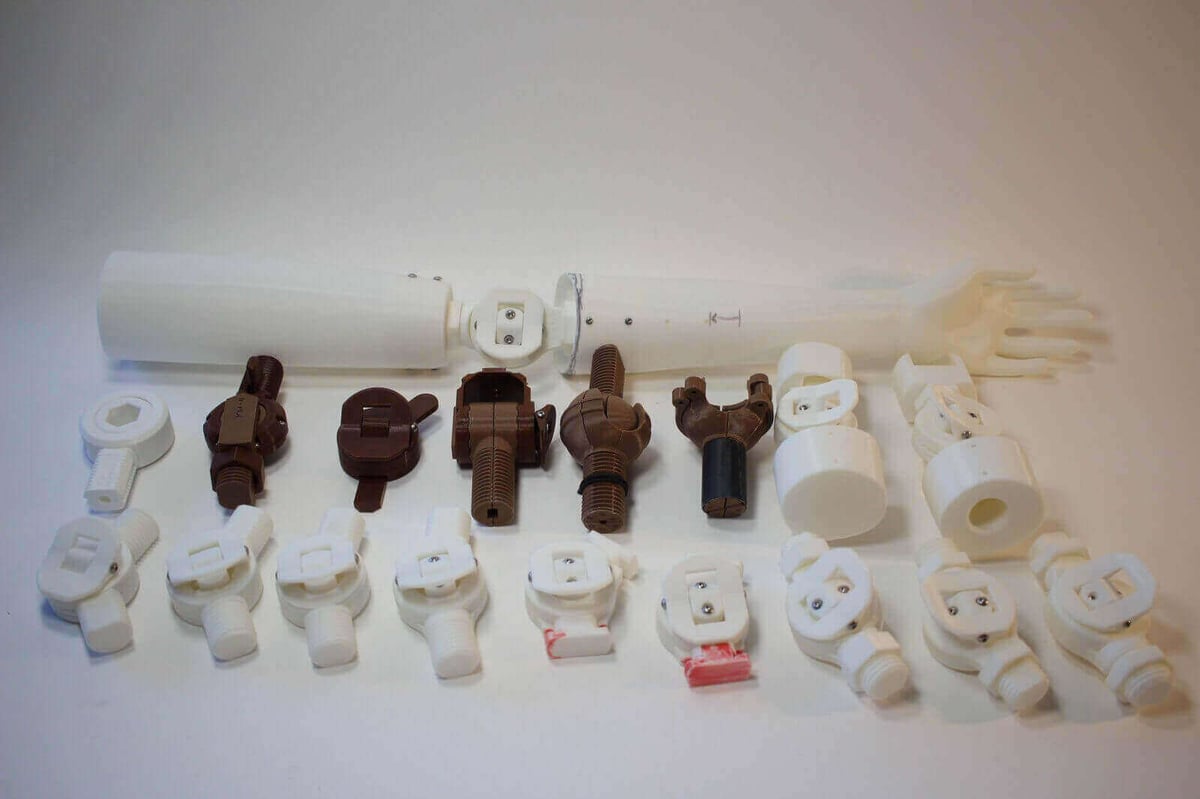The prosthetics company LimbForge is developing and testing an advanced 3D printed elbow prosthetic with the help of experts and patients.
In the medical field, 3D printing technology offers quick, cheap prosthetics that can change lives for the better. One company that is dedicated to providing high-quality assistive devices is LimbForge. The company builds both prosthetics and tools that allow doctors to provide patients with designs that look and feel as natural as possible.
Currently, the team is working on a 3D printed elbow prosthetic. To figure out how they could improve their latest design, LimbForge visited patients in Haiti. Here, designer James Wang and the team collected feedback on how to refine the prosthetic elbow.
Then, upon returning home, they had a clearer idea of what patients needed and set to improve their work. Using 3D printing, they put the finishing touches on their new elbow prosthetic design.
There were many ideas and comments collected from the visit to Haiti that needed to be incorporated into the design. For example, adding the ability to actuate the elbow off of the patient’s body. Patients did not want to have to use their sound limb just to lock or unlock the prosthesis.
Wang also made it possible to position the prosthetic elbow anywhere in its range of motion, rather than in four or five locations. He developed multiple prototypes to integrate all the feedback the team received and make sure the design was easy-to-assemble, as well as functional and long-lasting.

3D Printing the Final Elbow Prosthetic
After taking advice from Haitian patients, the team sought help from the University of California in San Francisco. Wang spoke to prosthetists orthotists Richard Nguyen and Alex Hetherington, who were able to suggest further improvements to the design.
The designers were then able to create an elbow prosthetic that offers a more natural look and increased functionality. Additionally, LimbForge made sure that the interface between the elbow and the rest of the prosthetic is mechanically sound.
The final design is also reversible, meaning that the device can be maintained whenever a patient’s body changes. By doing this, clinics won’t need to re-print the whole device if the elbow wears out or breaks.
After collecting feedback, the team has started working on the performance side of things. They did this by building a cycle testing rig. Thus far, LimbForge claims that the elbow has undergone over 20,000 cycles on the testing rig, measuring out to an estimate of around 6-12 months of use.
Next, LimbForge hopes to reduce the cycle time, accelerate the testing process, and launch beta testing. This means fitting patients with the complete device that can be put to the final test. Meanwhile, the team will start work on a new elbow that offers more than one degree of freedom, helping to overcome the lack of internal-external rotation found in the current model.
Source: Medium

License: The text of "LimbForge Develops and Tests Advanced 3D Printed Prosthetic Elbow" by All3DP is licensed under a Creative Commons Attribution 4.0 International License.